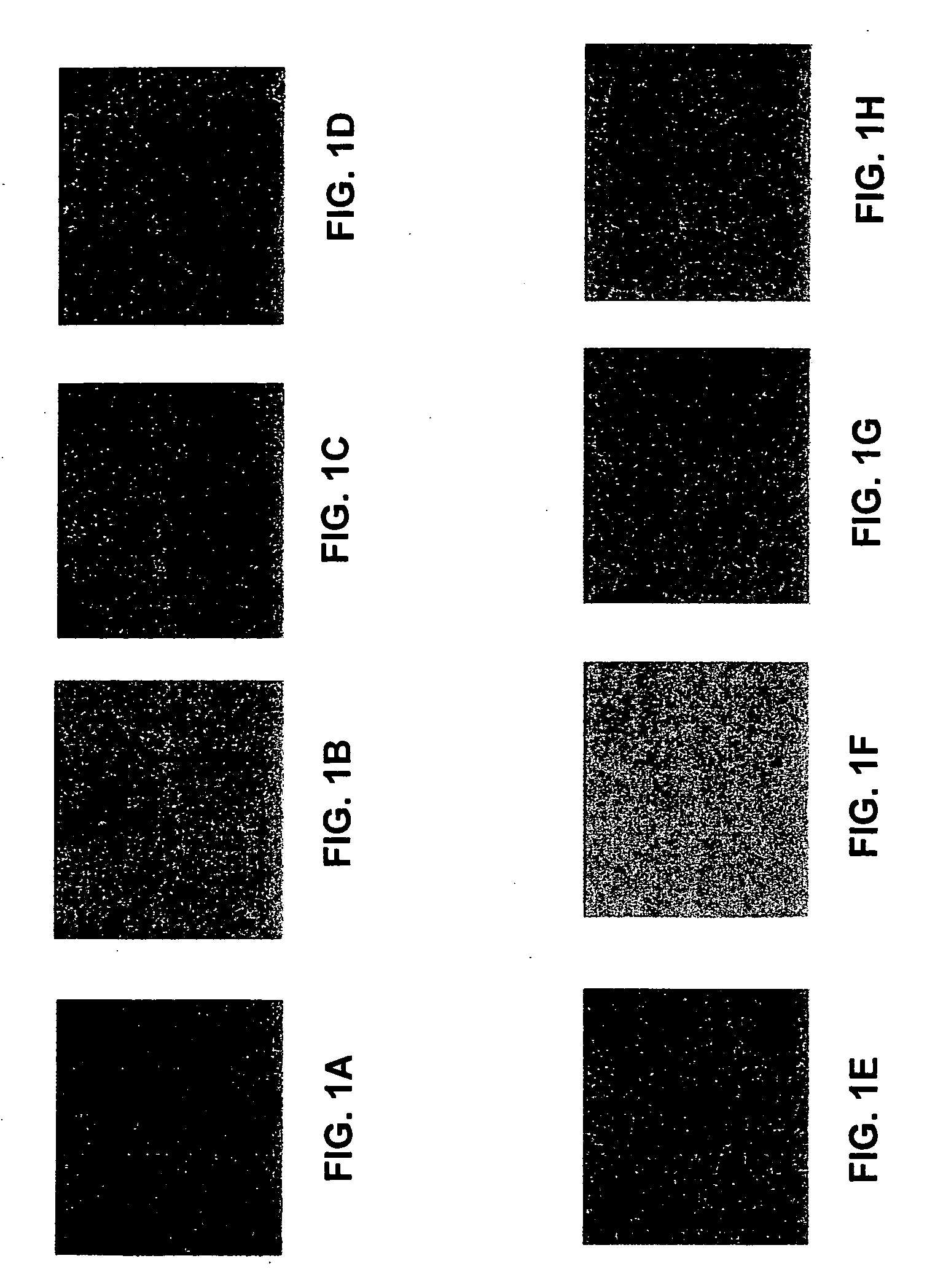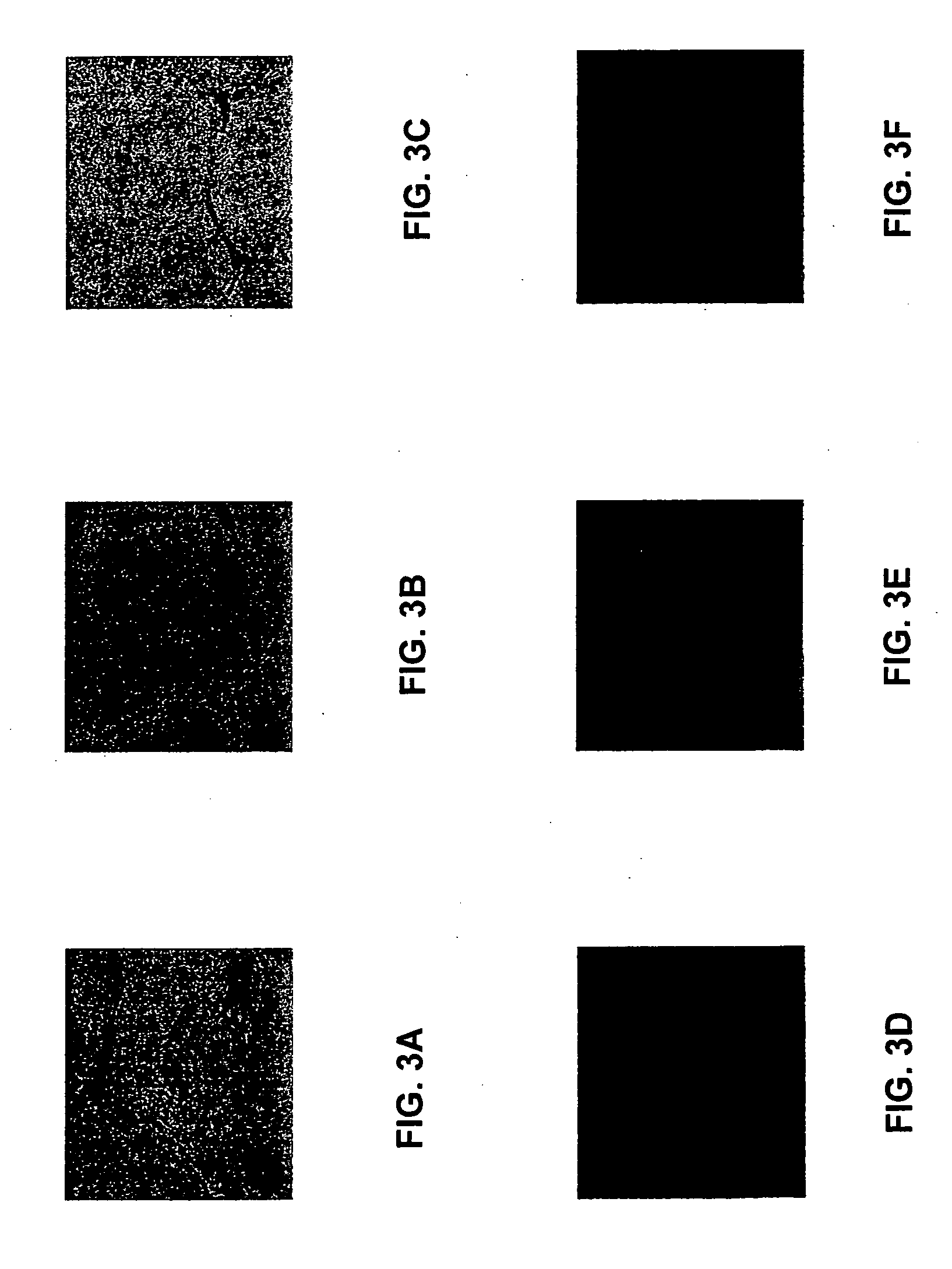Nanoparticle conjugates
- Summary
- Abstract
- Description
- Claims
- Application Information
AI Technical Summary
Benefits of technology
Problems solved by technology
Method used
Image
Examples
example b
Introduction of Thiols to Antibodies
[0085] To activate an antibody for conjugation, for example, an anti-mouse IgG or anti-rabbit IgG antibody, the antibody can be incubated with 25 mmol DTT at ambient temperature (23-25° C.) for about 25 minutes. After purification across a PD-10 SE column, DTT-free antibody, typically with two to six free thiols, is obtained (Scheme 2). The exemplary procedure outlined for preparing goat anti-mouse IgG thiol is generally applicable to other antibodies. The number of thiols per antibody can be determined by titration, for example, by using the thiol assay described in U.S. Provisional Patent Application No. 60 / 675,759, filed Apr. 28, 2005, which application is incorporated by reference herein.
example c
Conjugates of Immunoglobulins and Streptavidin with CdSe / ZnS Quantum Dots for Ultrasensitive (and Multiplexed) Immunohistochemical and In Situ Hybridization Detection in Tissue Samples
[0086] Semiconductor nanocrystals, often referred to as quantum dots, can be used in biological detection assays for their size-dependent optical properties. Quantum dots offer the ability to exhibit bright fluorescence as a result of high absortivities and high quantum yields in comparison to typical organic fluorphores. Additionally, the emission is tunable and stable to photobleaching, allowing for archivability. For detection and assay purposes, these robust fluorophores provide advantages in multiplexing assays. For example, excitation for these visible / NIR emitters is possible with a single source. However, a limiting factors in biological imaging is the sensitivity and stability of bioconjugates. In order to effectively utilize quantum dots in multicolor assays, each dot is desirably specific a...
PUM
| Property | Measurement | Unit |
|---|---|---|
| Molar density | aaaaa | aaaaa |
| Molar density | aaaaa | aaaaa |
| Concentration | aaaaa | aaaaa |
Abstract
Description
Claims
Application Information
 Login to View More
Login to View More - R&D
- Intellectual Property
- Life Sciences
- Materials
- Tech Scout
- Unparalleled Data Quality
- Higher Quality Content
- 60% Fewer Hallucinations
Browse by: Latest US Patents, China's latest patents, Technical Efficacy Thesaurus, Application Domain, Technology Topic, Popular Technical Reports.
© 2025 PatSnap. All rights reserved.Legal|Privacy policy|Modern Slavery Act Transparency Statement|Sitemap|About US| Contact US: help@patsnap.com



